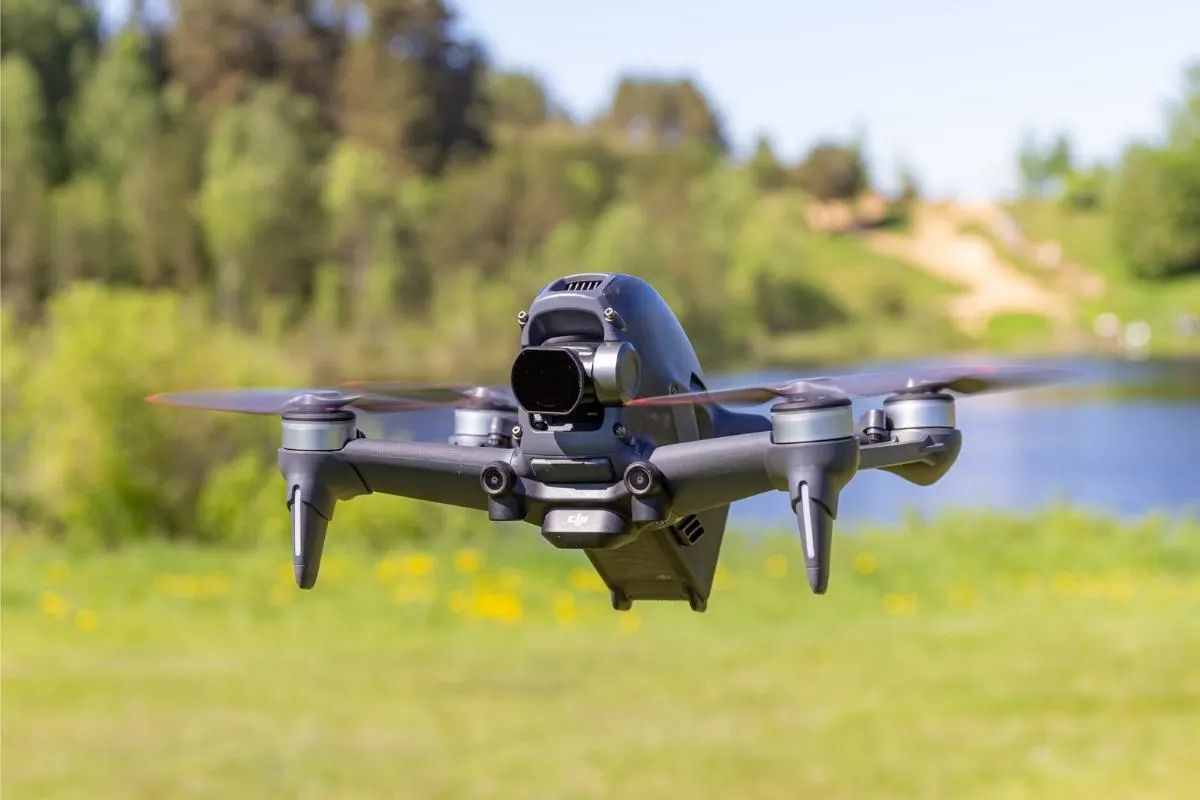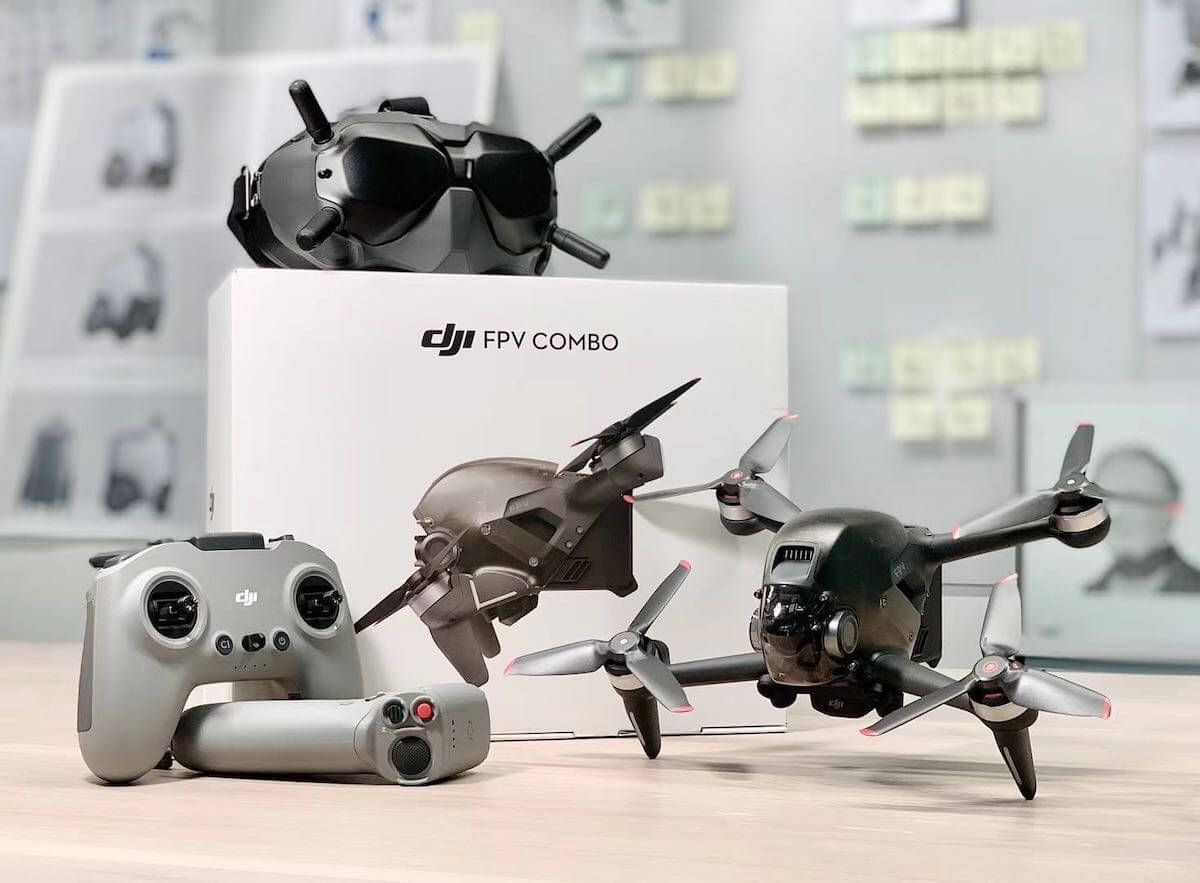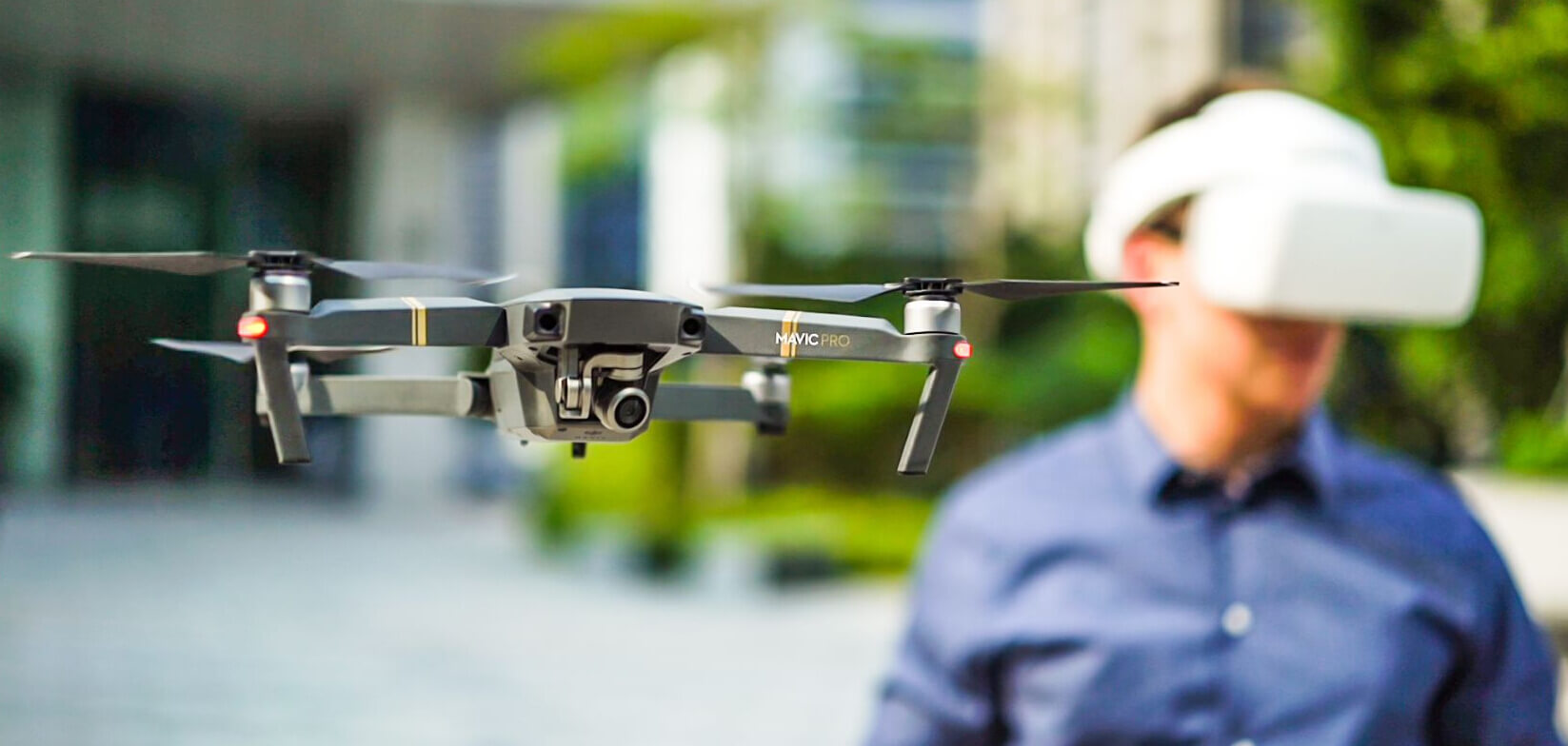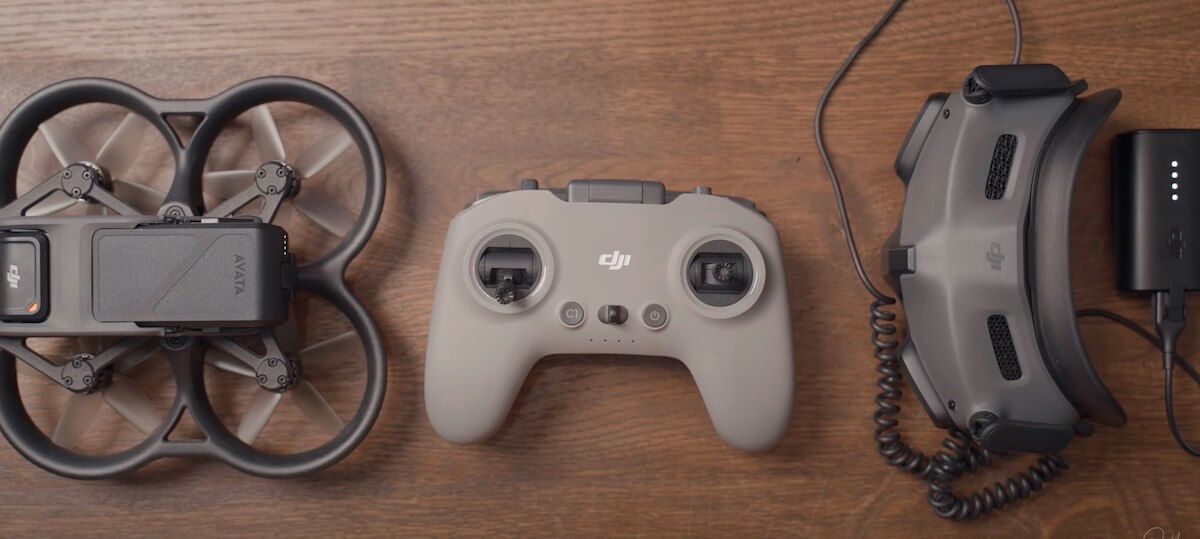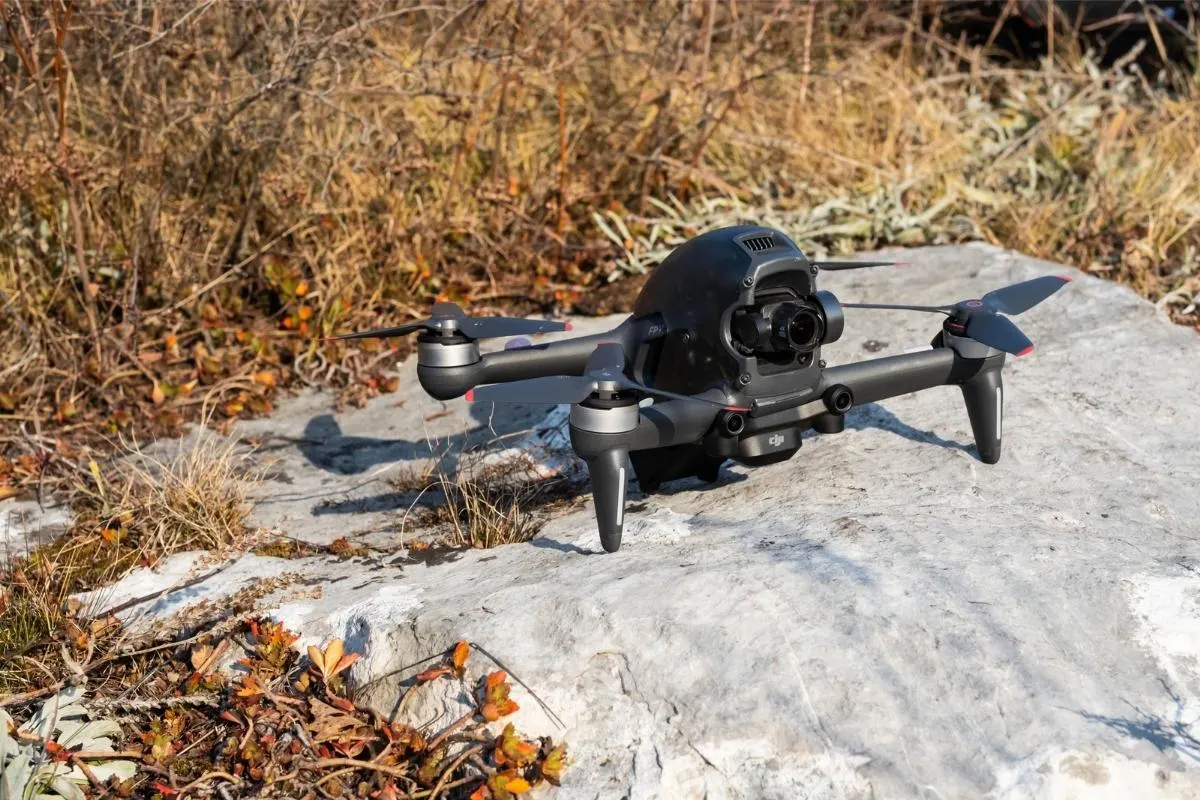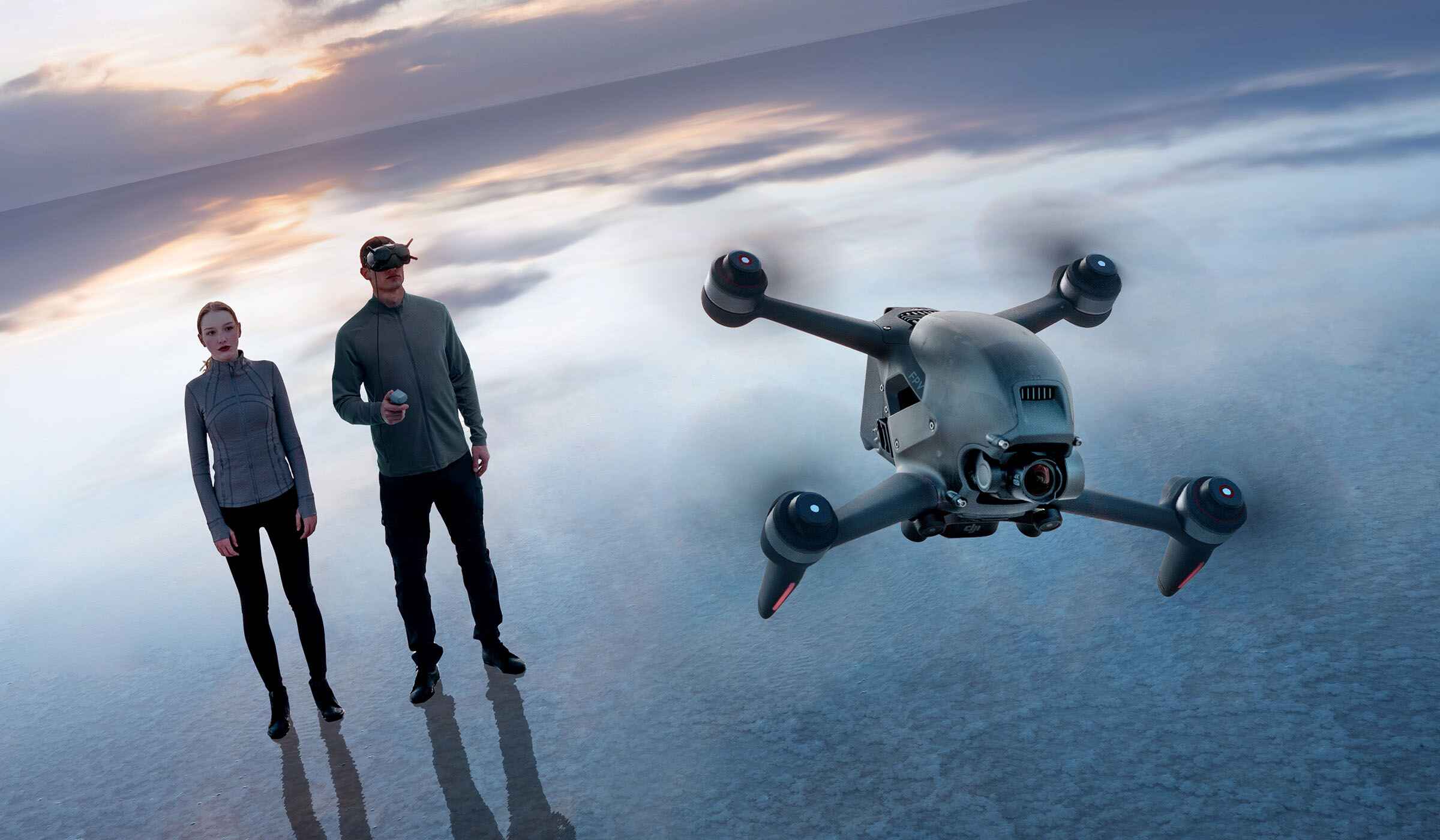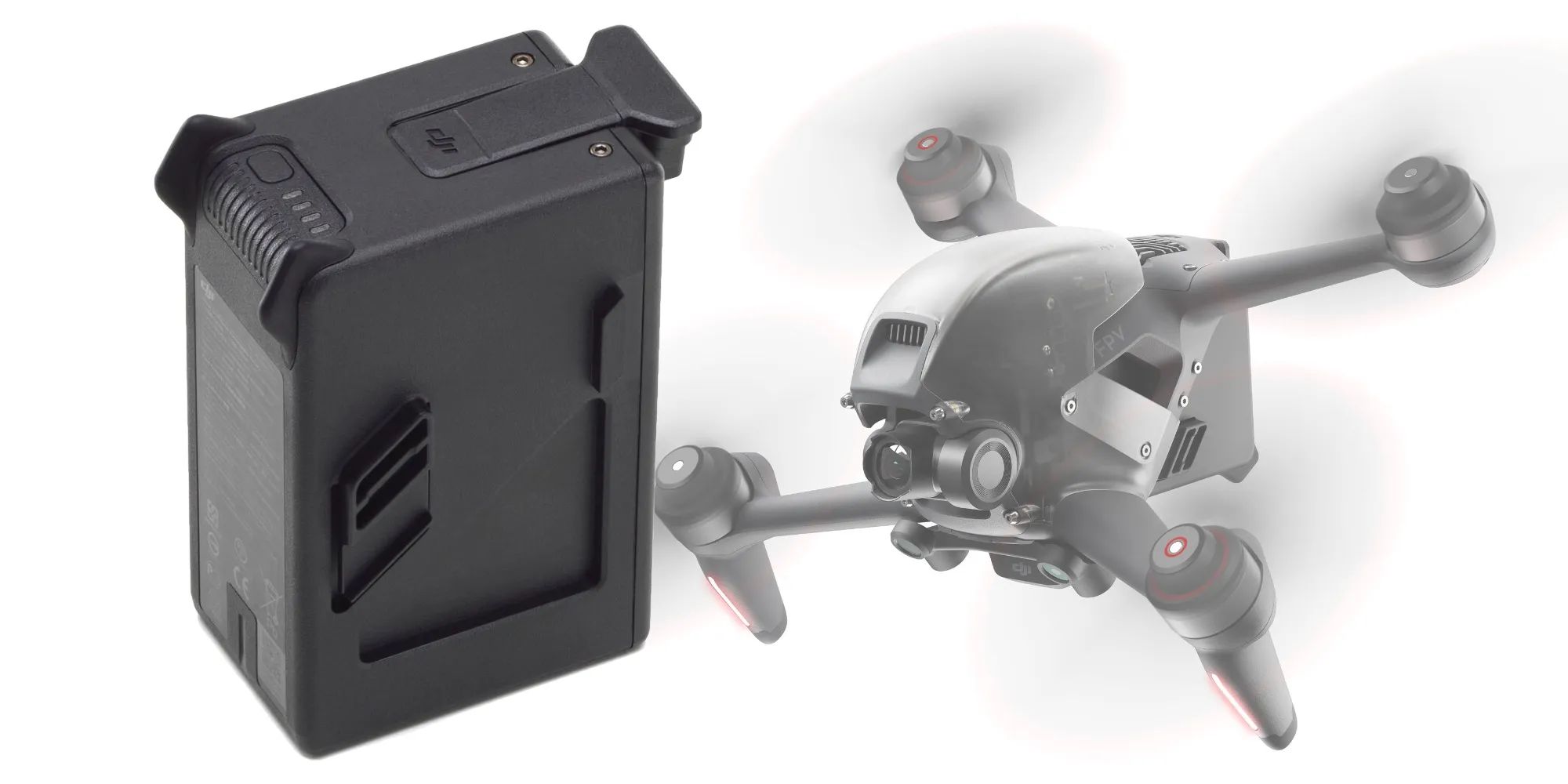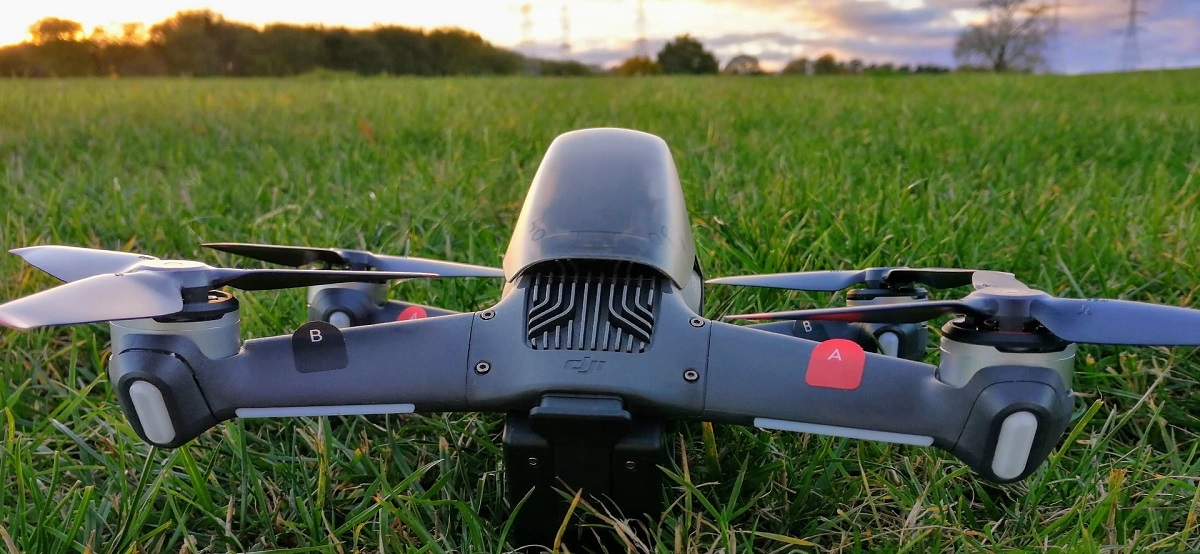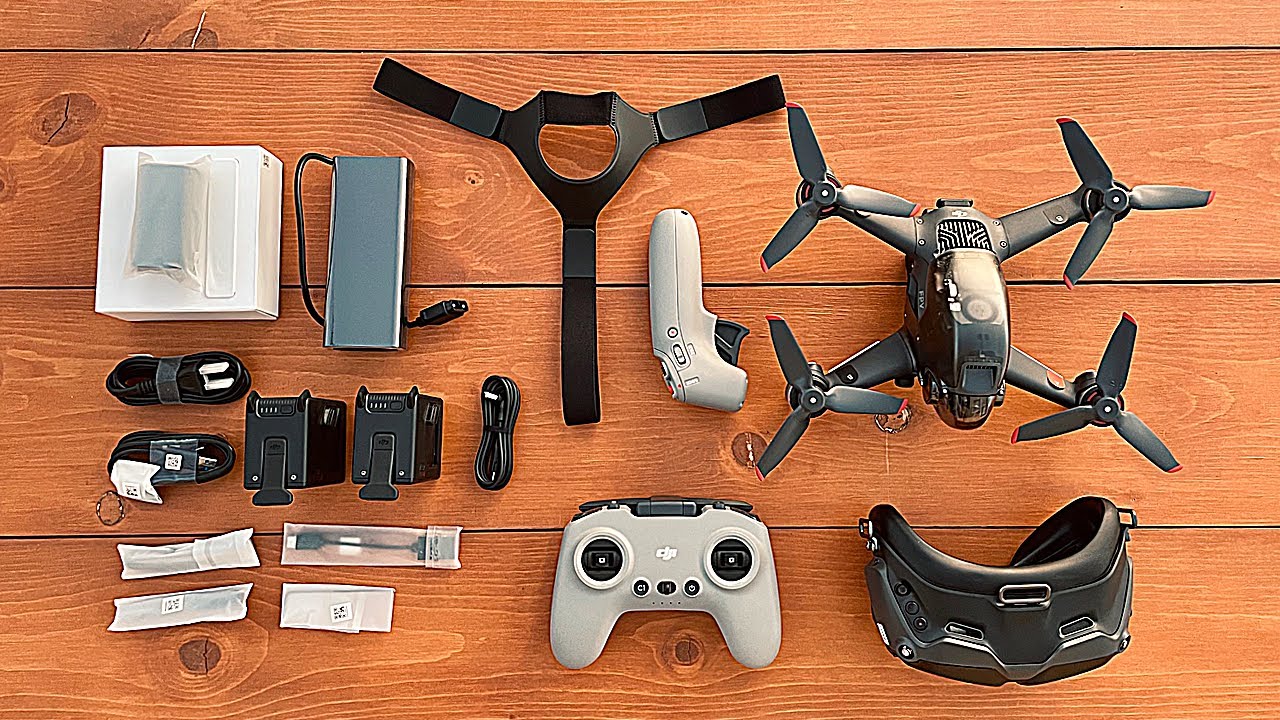Introduction
Welcome to the exhilarating world of FPV (First Person View) flying with the DJI FPV system! If you’ve always dreamt of experiencing the thrill of piloting a high-speed drone through the sky, capturing awe-inspiring footage, and pushing the boundaries of your creativity, then this guide is for you.
The DJI FPV system is designed to provide an immersive and unparalleled flying experience like no other. With its advanced technology, intuitive controls, and incredible speed, it opens up a whole new dimension of aerial exploration and videography. Whether you’re a beginner looking to learn the ropes or an experienced pilot ready to take your skills to new heights, this guide will equip you with the knowledge and techniques to make the most of your DJI FPV drone.
In this comprehensive guide, we’ll walk you through everything you need to know to get off the ground with the DJI FPV system. We’ll start by familiarizing you with the components of the system and ensuring you have a clear understanding of its capabilities. Safety is paramount, so we’ll also cover essential precautions and legal considerations for responsible flying.
Once you’re set up and ready to take flight, we’ll dive into the world of flight modes and settings, helping you understand how to optimize your drone’s performance and tailor it to your specific needs. From there, we’ll provide beginner-friendly techniques to help you master the basics of FPV flying, and then progress to more advanced maneuvers for those seeking a greater challenge.
But it’s not just about flying; it’s also about capturing stunning footage. As we explore the art of FPV videography, we’ll share tips and tricks for maximizing the visual impact of your shots and immersing your viewers in the action. And of course, we’ll address common troubleshooting issues to ensure a smooth and enjoyable flying experience.
So, buckle up and get ready to embark on an incredible journey with the DJI FPV system. Whether you’re an adrenaline junkie looking for a thrilling hobby or a creative enthusiast aiming to push the boundaries of aerial videography, this guide has everything you need to take your FPV flying skills to new heights. Let’s take off with DJI FPV and unleash the full potential of your drone!
Getting to Know the DJI FPV System
Before you take to the sky with your DJI FPV drone, it’s essential to understand the different components of the DJI FPV system. Knowing how each part works together will not only enhance your flying experience but also ensure you make the most of the drone’s capabilities.
The DJI FPV system consists of three main components: the DJI FPV drone, the FPV goggles, and the FPV remote controller. The drone itself is a sleek and aerodynamic aircraft equipped with high-performance motors and a built-in 4K camera. Its lightweight design and durable construction make it ideal for both acrobatic flying and capturing stunning aerial footage.
The FPV goggles are what truly immerse you in the flying experience. They provide a first-person view of the drone’s flight path, allowing you to see exactly what the drone sees. With low-latency transmission and high-definition video, you’ll feel as though you’re soaring through the sky. The goggles also house built-in antennas for seamless connectivity and an adjustable headband for a comfortable fit.
The FPV remote controller is your command center, providing you with precise control over the drone’s movements. It features a highly responsive joystick, customizable buttons, and a built-in display for accessing essential flight information. Its ergonomic design ensures a comfortable grip, allowing you to fly for extended periods without fatigue.
One of the standout features of the DJI FPV system is its advanced transmission technology. It utilizes DJI’s OcuSync 3.0 for stable, long-range, and low-latency video transmission. This means that you can fly confidently, knowing that your video feed will remain crisp and uninterrupted, even at significant distances.
Additionally, the DJI FPV system offers a range of intelligent flight modes and features to enhance your flying experience. From automated flight paths to precise obstacle sensing and avoidance, these features provide added safety and convenience while allowing you to focus on capturing breathtaking footage.
Now that you’re familiar with the different components and features of the DJI FPV system, you’re ready to dive deeper into the world of FPV flying. In the next section, we’ll discuss the necessary safety precautions and legal considerations you need to be aware of before taking flight.
Safety Precautions and Legal Considerations
Flying a DJI FPV drone is an exhilarating experience, but it’s crucial to prioritize safety and abide by the laws and regulations governing drone flight. By taking the necessary precautions and staying well-informed, you can enjoy your flights responsibly and without endangering yourself or others.
First and foremost, it’s important to familiarize yourself with the local regulations related to drone flight. Different countries and regions may have specific rules governing where and how you can fly your drone. Check with your local aviation authority to understand any permits, certifications, or restrictions you may need to comply with.
When flying your DJI FPV drone, always conduct a pre-flight checklist to ensure that your equipment is in proper working condition. Inspect the aircraft, batteries, and remote controller for any signs of damage or wear that could compromise their performance. It’s also crucial to have a fully charged battery and to check for any firmware updates before each flight.
Choose a safe and suitable flying location with ample space, minimal obstructions, and a clear line of sight. Avoid flying near airports, military installations, or other restricted areas. It’s also necessary to respect the privacy and property of others, ensuring you’re not intruding on private spaces or violating any privacy regulations.
Maintaining visual contact with your drone at all times is essential for safe and controlled flights. Ensure that you have a clear line of sight and avoid flying in conditions with low visibility, such as fog or heavy rain. If you’re using the FPV goggles, have a dedicated spotter to assist you in maintaining situational awareness and to help you avoid any potential hazards.
Always fly within your skill level and gradually progress to more advanced maneuvers as you become more experienced. Avoid pushing the limits of your drone’s capabilities without sufficient practice and understanding of its performance. Practicing in open areas away from people, animals, and fragile objects will minimize the risk of accidents or damage.
Taking precautions for the safety and well-being of others is also vital. Be mindful of your surroundings and avoid flying over crowded areas or near people who are not participating in the flight. If you’re capturing footage of individuals, always obtain their consent and respect their privacy.
In the event of an emergency or unexpected situation, remain calm and composed. Familiarize yourself with the emergency procedures outlined in the user manual and be prepared to take immediate action if needed. It’s always better to prioritize safety over recovering the drone or footage.
By following these safety precautions and adhering to the legal considerations, you can enjoy your DJI FPV drone flights responsibly and confidently. Now that you’re aware of the safety measures, let’s move on to setting up your DJI FPV drone for an incredible flying experience.
Setting Up Your DJI FPV Drone
Now that you’re familiar with the safety precautions and legal considerations, it’s time to set up your DJI FPV drone for an awe-inspiring flight. Proper setup ensures optimal performance and functionality, allowing you to make the most of your FPV experience.
The first step is to ensure that your drone’s battery is fully charged. Connect the provided charger to a power source and insert the battery. It’s crucial to follow the manufacturer’s guidelines for charging and handling the battery to avoid any safety hazards. Once the battery is fully charged, slide it into the battery compartment on the drone and ensure it is securely in place.
Next, power on your DJI FPV drone by pressing the power button located on the aircraft. Allow a few moments for the drone to initialize and connect to the remote controller. Ensure that both the drone and the remote controller are on the same frequency band and linked to each other for proper communication.
Before taking flight, make sure to calibrate the drone’s compass. This step is crucial for accurate positioning and navigation. Follow the instructions in the user manual or the DJI Fly app to perform the compass calibration. Typically, this involves rotating the drone in a specific pattern to calibrate its internal sensors.
Once the compass calibration is complete, it’s time to connect the FPV goggles to the drone. Power on the goggles by pressing and holding the power button. After the goggles have booted up, use the provided USB-C cable to connect them to the drone. This connection allows you to view the live video feed transmitted from the drone’s camera.
Make sure you have a clear line of sight between the drone and the goggles, and verify that the video feed is stable and clear. Adjust the goggles’ straps and fit for a comfortable and secure wearing experience. Remember to put safety first and ensure that you have a designated spotter to assist you during flights when using the FPV goggles.
Your DJI FPV drone is now set up and ready for flight. However, it’s essential to check for firmware updates in the DJI Fly app before each flight. Keeping your drone’s firmware up to date is crucial for stability, performance improvements, and access to new features.
Before taking off, it’s wise to perform a pre-flight checklist. This includes double-checking the drone’s systems, verifying the battery level, ensuring the propellers are securely attached, and confirming that the GPS signal is strong. Familiarize yourself with the flight controls and modes to ensure a smooth and controlled flight.
By following these setup steps and performing essential checks, you’ll be ready to unleash the full potential of your DJI FPV drone. In the next section, we’ll dive into flight modes and settings, empowering you to customize the drone’s behavior and performance to suit your flying style.
Understanding Flight Modes and Settings
To fully harness the capabilities of your DJI FPV drone, it’s crucial to understand the various flight modes and settings available. These modes and settings allow you to customize your drone’s behavior, maximize performance, and cater to your specific flying style and preferences.
One of the essential flight modes you should familiarize yourself with is the Normal Mode. In this mode, the drone behaves similarly to traditional camera drones, offering stability and ease of control. It limits the drone’s speed and agility, making it ideal for beginners or when you want smooth and controlled flights for capturing aerial footage.
For those craving more excitement and agility, the Manual Mode is where the real fun begins. In this mode, the drone offers full acrobatic capabilities and high-speed flight. You’ll have complete control over the drone’s movements, enabling you to perform thrilling maneuvers such as flips, rolls, and inverted flights. Mastering Manual Mode requires practice and skill, but it opens up a world of possibilities for advanced pilots.
To enhance your aerial videography, the Cinematic Mode is a fantastic option. This mode prioritizes smooth and gentle movements, allowing you to capture cinematic shots with ease. It reduces the drone’s sensitivity to stick inputs, resulting in slower and more fluid movements for a more cinematic and professional look in your footage.
In addition to flight modes, the DJI FPV system offers a range of customizable settings to suit your preferences. The sensitivity settings, for example, allow you to adjust the responsiveness of the drone to your control inputs. Increasing the sensitivity provides quicker and more agile responses, while reducing it offers more precise and controlled movements.
Another essential setting is the Return-to-Home (RTH) feature. This feature allows the drone to automatically fly back to its takeoff point in case of low battery, lost connection, or whenever you initiate the RTH command. It provides added security and peace of mind, ensuring your drone returns safely even in unexpected situations.
Furthermore, the DJI FPV drone offers a range of intelligent flight modes, such as ActiveTrack and Waypoints. These modes automate the flight path, allowing you to focus on capturing the perfect shot. ActiveTrack enables the drone to track and follow a selected subject, while Waypoints let you predefine a flight route for the drone to autonomously follow, unlocking creative possibilities for captivating footage.
Understanding and experimenting with these flight modes and settings will enable you to tailor your DJI FPV drone’s performance to meet your specific needs. Whether you’re seeking thrilling acrobatics, smooth cinematic shots, or automated flight paths, the DJI FPV system offers the flexibility and customization options to take your flights to the next level.
Now that you have a grasp of the various flight modes and settings, it’s time to learn the fundamental flying techniques for beginners. In the next section, we’ll cover the basics of FPV flying, empowering you to confidently take to the skies with your DJI FPV drone.
Basic Flying Techniques for Beginners
As a beginner in the world of FPV flying, it’s important to start with the basics and gradually build your skills and confidence. Mastering these fundamental flying techniques will lay a solid foundation for more advanced maneuvers and acrobatics with your DJI FPV drone.
1. Throttle and Altitude Control: Start by familiarizing yourself with the throttle stick on the remote controller. The throttle controls the altitude of the drone, allowing it to ascend or descend. Practice maintaining a steady altitude and smoothly adjusting the throttle to keep the drone at your desired height.
2. Pitch and Roll Control: The pitch control allows the drone to tilt forward or backward, while the roll control enables it to tilt sideways. Practice flying in a straight line by using the pitch control to move forward and backward and the roll control to maintain a level flight path.
3. Yaw Control: Yaw control is responsible for rotating the drone clockwise or counterclockwise. Practice turning the drone smoothly and maintaining control of its direction using the yaw stick. This skill will be essential for navigating your drone and capturing dynamic shots.
4. Hovering: Hovering is the ability to keep the drone stable in one place. Practice holding the drone in a stationary hover by making small adjustments to the throttle, pitch, and roll controls. This skill is crucial for maintaining stability and capturing steady shots.
5. Basic Maneuvers: Once you are comfortable with the basic controls, it’s time to try some simple maneuvers. Start by practicing smooth turns, figure-eights, and circles. Gradually increase your speed and agility as you gain confidence and familiarity with the drone’s response.
6. Obstacle Avoidance: As a beginner, it’s important to fly in an open area with minimal obstacles. Practice maneuvering around stationary objects, such as trees or poles, to improve your spatial awareness and depth perception. This skill will be valuable when flying in more challenging environments.
Remember, practice makes perfect. Dedicate time to fly regularly and gradually push your limits as your skills improve. It’s also a good idea to join online communities, forums, or local FPV groups to learn from experienced pilots and receive valuable tips and feedback.
Lastly, always prioritize safety and follow the guidelines from previous sections. Start with a safe flying location, maintain visual contact with your drone, and avoid flying near people, animals, or structures. Taking these precautions will ensure a safe and enjoyable FPV flying experience.
Now that you have a solid grasp of the basic flying techniques, we’ll move on to advanced flying techniques for experienced pilots. These techniques will help you take your FPV skills to the next level and unlock endless possibilities with your DJI FPV drone.
Advanced Flying Techniques for Experienced Pilots
Congratulations! You’ve mastered the basic flying techniques and are now ready to take your skills as an FPV pilot to new heights. As an experienced pilot, you can explore more advanced maneuvers and techniques with your DJI FPV drone. These techniques will allow you to execute jaw-dropping aerial stunts and capture breathtaking footage.
1. Power Loops and Split-S: Power loops and split-S maneuvers are staples of the FPV acrobatics repertoire. A power loop involves flying the drone in an upward half-loop, followed by a downward descent, smoothly transitioning into an inverted flight position. A split-S maneuver is the reverse, with the drone descending in a half-loop and transitioning into a forward flight. Mastering these maneuvers requires precise throttle control and coordination of pitch, roll, and yaw.
2. Flips and Rolls: Flips and rolls are stylish and dynamic maneuvers that add flair to your flights. A flip involves rotating the drone along the pitch or roll axis, performing a 360-degree rotation in the air. Rolls are similar but involve rotating the drone along the roll axis only. Practice these maneuvers in open spaces, maintaining control and ensuring a smooth execution.
3. Powerful Climbs and Dives: Take advantage of the DJI FPV drone’s powerful motors to perform impressive climbs and dives. Execute powerful ascents, rapidly climbing to higher altitudes, and then smoothly transition into a controlled dive, descending at high speed. These maneuvers require precise throttle adjustments and smooth control inputs to maintain stability and control throughout.
4. Dynamic Tracking Shots: With the advanced flight modes of the DJI FPV drone, you can capture dynamic tracking shots that follow a subject in motion. Use ActiveTrack mode to track a moving subject automatically, allowing the drone to keep the subject in frame while you focus on controlling its flight path. Experiment with different tracking angles and speeds to create dynamic and engaging footage.
5. Chasing and Orbiting: Chasing and orbiting techniques are effective for capturing cinematic shots with a sense of motion. Practice smoothly tracking and chasing a subject, keeping a safe distance while maintaining a steady visual lock. Alternatively, experiment with orbiting around a stationary subject, creating stunning panoramic shots and revealing the environment from different angles.
6. Freestyle Flying: As an experienced pilot, you have the freedom to explore your creativity through freestyle flying. Combine various maneuvers, mix up flips, rolls, and spins, and experiment with different flight paths to express your own unique style. Freestyle flying allows for personal expression and showcases the full potential of the DJI FPV drone.
Remember to always prioritize safety and fly within your skill level. Push your limits gradually, practicing new maneuvers in controlled environments and gradually expanding your repertoire. Continue to challenge yourself while maintaining control and prioritizing the safety of yourself, others, and your surroundings.
With these advanced flying techniques, you’ll be able to execute jaw-dropping stunts and capture stunning footage that leaves viewers in awe. Remember to practice, experiment, and have fun as you continue to hone your skills as an FPV pilot.
In the next section, we’ll dive into tips and techniques for capturing stunning FPV footage, helping you take your aerial videography to the next level.
Tips for Capturing Stunning FPV Footage
Capturing stunning FPV footage goes beyond flying skills and maneuvers. It requires a keen eye for composition, timing, and storytelling. With the right techniques and creativity, you can take your aerial videography to the next level with your DJI FPV drone. Here are some tips to help you capture truly awe-inspiring footage.
1. Plan your shots: Before taking off, have a clear vision of the shots you want to capture. Plan your flight path, consider the surroundings, and visualize the composition to create impactful footage. Great shots often require multiple takes, so be patient and take the time to get the perfect shot.
2. Vary your perspective: Experiment with different angles and perspectives to add depth and visual interest to your footage. Fly close to the ground for dramatic low-level shots, or ascend to higher altitudes for sweeping panoramic views. Combine different heights, angles, and movements to create dynamic sequences.
3. Utilize the DJI FPV drone’s capabilities: Make the most of the advanced features of your DJI FPV drone. Activate the ActiveTrack mode to track a moving subject automatically or use the Cinematic Mode for smooth and stable footage. Take advantage of the drone’s speed and agility to capture fast-paced action or create elegant cinematic shots.
4. Use the environment creatively: Incorporate the natural elements in your shots to enhance the visual impact. Fly through trees, over bodies of water, or along architectural structures to create stunning and immersive sequences. Be mindful of your surroundings and fly with respect for the environment.
5. Master the art of transitions: Smooth transitions can add a professional touch to your footage. Experiment with aerial transitions between different environments, change the speed or orientation of the drone mid-shot, or utilize post-production techniques to create seamless transitions between clips for a cinematic feel.
6. Shoot in the right lighting conditions: Lighting plays a crucial role in the quality of your footage. Aim to shoot during the golden hour, which is the period just after sunrise or before sunset when the lighting is soft and warm. Avoid shooting in harsh midday sunlight, as it can create harsh shadows and overexposed areas.
7. Edit and enhance your footage: Post-production editing can elevate your footage to the next level. Use professional video editing software to color grade, stabilize, and enhance your footage. Add music, sound effects, and text overlays to create a captivating visual story.
8. Stay up-to-date with FPV trends and techniques: Continuously learn and stay inspired by following FPV communities, forums, and social media platforms. Engaging with fellow FPV enthusiasts and professionals can provide valuable insights, tips, and inspiration for pushing the boundaries of your aerial videography.
Remember, safety should always be your top priority. Fly responsibly and follow all applicable laws and regulations regarding drone flight. Prioritize the safety of people, property, and wildlife.
By implementing these tips and techniques, you’ll be able to capture stunning FPV footage that leaves viewers amazed. Embrace your creativity, experiment with different techniques, and let your imagination soar as you push the limits of what’s possible with your DJI FPV drone.
In the next section, we’ll explore common troubleshooting issues that you may encounter during your FPV flights, providing solutions to keep you flying smoothly.
Troubleshooting Common Issues
While flying your DJI FPV drone, you may encounter certain issues or challenges that can impact your flight experience. Understanding common problems and knowing how to troubleshoot them will help you overcome obstacles and ensure a smooth and enjoyable flying experience. Here are some common issues and their solutions:
1. Loss of Signal: If you experience a loss of signal between the drone and the remote controller, it’s essential to remain calm and take immediate action. Try repositioning yourself and the remote controller to reestablish a stronger signal connection. If the problem persists, check for any interferences in the area, such as nearby power lines or Wi-Fi networks. In extreme cases, initiate the Return-to-Home (RTH) function to ensure the safe return of the drone.
2. Poor Video Transmission: In situations where the video transmission appears pixelated or laggy, check the signal strength between the drone and the FPV goggles. Ensure that the antennas on both the drone and the goggles are in optimal positions and not obstructed. Lower the video quality settings in the DJI Fly app if necessary, as this can help improve the video transmission stability.
3. Drone Drifting: If you notice your drone drifting or not maintaining a stable position during flight, it could be due to incorrect compass calibration or GPS signal interference. Perform a compass calibration before each flight to ensure accurate positioning. Avoid flying in areas with strong magnetic fields or near structures that may interfere with the GPS signal.
4. Battery Issues: Battery-related issues can occur, such as reduced flight time or sudden power drops. Always ensure that the battery is fully charged before each flight and monitor the battery level during flight. Avoid exposing the batteries to extreme temperatures, as this can negatively impact their performance. If you experience significant battery issues, consider recalibrating or replacing the battery.
5. Gimbal Calibration: If you notice the camera’s gimbal is not level or stabilized, it may require calibration. Follow the instructions provided in the user manual or DJI Fly app to perform a gimbal calibration. This process ensures smooth movements and accurate stabilization during flight.
6. Heavy Wind Conditions: Flying in heavy wind conditions can be challenging and may adversely affect the stability and control of your drone. If you encounter strong winds, try to reduce altitude and fly in a sheltered area to minimize the impact. It’s important to prioritize safety and land the drone if the wind conditions become too severe.
7. Software and Firmware Updates: Keeping your DJI FPV system up to date with the latest software and firmware releases is crucial for optimal performance and stability. Check for updates regularly in the DJI Fly app and follow the recommended update process. This ensures access to new features and bug fixes, enhancing your overall flying experience.
By troubleshooting these common issues and effectively addressing them, you can minimize disruptions and enjoy uninterrupted flights with your DJI FPV drone. Always refer to the user manual, official DJI resources, and seek assistance from the DJI support team whenever necessary. With patience, practice, and problem-solving skills, you’ll be able to overcome challenges and make the most of your FPV flying experience.
In the final section, we’ll wrap up your FPV journey with some final thoughts and recommendations to help you continue exploring the wonders of FPV flying.
Final Thoughts and Recommendations
As we come to the end of this guide, we hope that your journey into the world of FPV flying with the DJI FPV drone has been an exciting and fulfilling experience. The DJI FPV system offers unparalleled immersion, speed, and versatility, allowing you to capture breathtaking footage and push the boundaries of aerial creativity.
As you continue to explore the possibilities of FPV flying, we have a few final thoughts and recommendations to help you make the most of your DJI FPV drone:
1. Practice, practice, practice: Consistent practice is the key to improving your flying skills and mastering advanced maneuvers. Dedicate time to regular flights and explore new techniques to continuously challenge yourself and grow as an FPV pilot.
2. Learn from others: Engage with the FPV community, join online forums, and connect with fellow pilots. Sharing experiences, tips, and knowledge will provide valuable insights and inspire you to push the boundaries of your FPV flights.
3. Prioritize safety: Always prioritize safety when flying your DJI FPV drone. Follow local regulations, maintain visual line of sight, and fly in safe environments. Be mindful of your surroundings and respect the privacy and property of others.
4. Experiment with creativity: FPV flying provides unique perspectives and creative possibilities. Embrace your creativity and experiment with different flight paths, camera angles, and editing techniques to create visually stunning and captivating footage.
5. Share your adventures: Share your FPV adventures with others. Share your footage on social media, create online channels, or participate in FPV events. By sharing your experiences, you can inspire and connect with other FPV enthusiasts around the world.
With your DJI FPV drone in hand, you have the power to push the boundaries of aerial videography and experience the thrill of FPV flying like never before. Embrace the learning process, be patient with yourself, and remember that every flight is an opportunity to grow and improve.
Now, it’s time to take off, explore new horizons, capture stunning footage, and unlock your full potential as an FPV pilot. Soar to new heights with your DJI FPV drone and let your creativity take flight!







